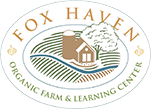News: A Message from the Wildlife and Heritage Service

Good morning!
I have been seeing a lot of social media posts lately advocating for dandelions to ‘save the bees’. As we get further in the growing season, I will likely see lists of plants for the bees, too. To clear up some confusion: dandelions aren’t the first and only sources of food for bees this time of year. Tree pollen from species like red maple is usually some of the first food. If the choice is between simply having lawn versus lawn with dandelions, then the latter would be better. However, if dandelions can infiltrate the lawn, why not allow native plants like common blue violets and/or field pussytoes to flourish instead?
When you see these types of posts, the first question you should ask is: what is the source of this information? There are lots of sites on the internet which make claims about what is best for bees and other pollinators, but I suggest looking for research-backed sites like the Xerces Society. The second: what bees are being helped? Is the list just for non-native honeybees? Is it for native species of leaf cutter bees? Does it help native species of mason bees? The third: are these plants even good for those bees? In the case of dandelions, they do help non-native honeybees to an extent, but they cannot solely support honeybees as the pollen lacks essential nutrients. It is important to note that simply attracting insects is not the same as supporting them. Flowers have evolved all sorts of functions from colorful flowers to irresistible floral scents to attract pollinators. Orchids are a great example as quite a few resort to trickery to lure in potential pollinators and sometimes offer no nectar or pollen reward. You can read about pink lady slipper’s method of pollination here.

Local Pollenator perched on Pussytoe Plant
In Maryland, we have over 430 species of bees. Honeybees are not-native and are essentially a species of livestock. (Honeybee colonies are regulated under the Maryland Department of Agriculture. If you want to learn more about keeping honeybees, check out the upcoming class from the Maryland Agricultural Resource Council). Almost a quarter of our native bee species are specialists that require a certain species or a small number of plant species to survive. A great example is the spring beauty bee which is a specialist on spring beauty pollen. (As an aside, their “work schedule” generally goes from 10:00am-2:30pm. Sign me up!) Dandelion will never be able to help the spring beauty bee, but spring beauty can grow in some lawn systems. Other species require a suite of plants to support their life cycle.
Unfortunately, I haven’t found a comprehensive list of native plants that help to support native bees because our native bees are so diverse. We also are still learning on what species are truly needed to support certain bees. However, there are a few resources that can assist:
1. Jarrod Fowler and Sam Droege have assembled a list of Pollen Specialist Bees of the Eastern United States and plants they use.
2. The Bees in Your Backyard is a great guide to the diversity of North American bees and includes plants that each group generally needs for survival. Some bees are actually pollen thieves!
3. Xerces Society has a list of recommended pollinator plants for the Mid-Atlantic.
4. I have a list of some common spring plants that support wildlife here. Additional plants with insects that have been seen visiting the flowers include:
a. Black chokeberry (Aronia melanocarpa)
b. Early Saxifrage (Saxifraga virginiensis)
c. Field Pussytoes (Antennaria neglecta)
d. Golden Ragwort (Packera aurea)
e. Harbinger of Spring (Erigenia bulbosa)
f. Plantain-leaved Pussytoes (Antennaria plantaginifolia)
g. Redbud (Cercis canadensis)
h. Spring Cress (Cardamine bulbosa)
i. Virginia Bluebells (Mertensia virginica)
j. Virginia Waterleaf (Hydrophyllum virginianum)
k. Yellow Trout Lily (Erythronium americanum)
As I always mention, it is important to plant for your site so make sure the plants you are putting in can live in your yard. In addition, to truly help native bees, we need to think about supporting the whole life cycle which includes providing areas for nesting and decreasing/eliminating pesticide use. If you really want to go down a rabbit hole, the Xerces Society has a very comprehensive Yard, Garden, and Park Assessment guide.
So, in the spirit of being good naturalists, let’s promote the best available science to help our local species.
Sincerely,
Kerry Wixted (she, her, hers)
Education and Outreach Specialist
Wildlife and Heritage Service
Department of Natural Resources
